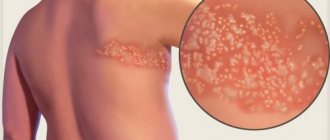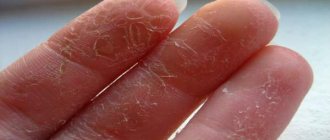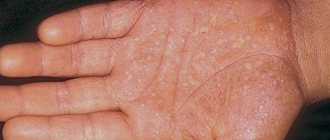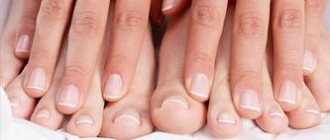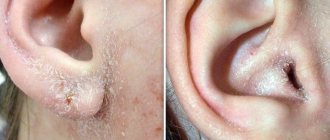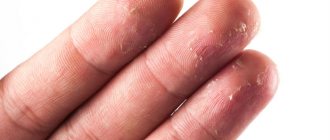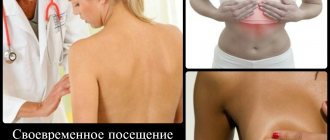Psoriasis is an incurable dermatological disease of a non-infectious nature, and is characterized by a clear manifestation of external signs. Scaly rashes on the skin, redness, swelling of tissues are not a complete list of symptoms by which a dermatologist determines pathology. The localization of psoriasis depends on the form of the pathology. In most cases, plaques appear on the legs, arms, and scalp. As the disease progresses, rashes grow throughout the body. Psoriasis in the ears and face is less common.
Causes of psoriasis in the ears
The causes of ear psoriasis are not fully understood. It has been established that a special role is given to genetics and the influence of external factors. The basis of pathogenesis is the accelerated division of epidermal cells. This is a multifactorial disease and its formation is caused by:
- constant or frequent injuries to the integument;
- heredity;
- chronic infectious diseases;
- constant stress;
- sudden change in climatic conditions;
- the body's reaction to long-term and massive drug therapy;
- alcoholism.
Necessary diagnostic measures
Ear psoriasis is similar to seborrheic eczema. Therefore, differential diagnosis is carried out.
A person suspected of psoriatic disease is referred for the following examinations:
- immunogram. A laboratory technician examines the blood for the presence of certain indices of immune function. The method shows the activity of the protective forces;
- urine analysis to determine the balance of water and salt in the body, metabolism;
- detection of histocompatibility antigens in the blood. Shows joint damage.
Based on the results of these research methods, a treatment plan is drawn up.
Symptoms of psoriasis on the ears
The external manifestations of the disease do not differ from other forms of psoriasis. Quite often, the symptoms of psoriasis in the ears are confused with the symptoms of seborrheic eczema. The pathology affects one or two ears at once. Typically, patients seek help with extensive damage to the scalp, the area around the ears and in their folds. Rashes often affect the auditory canal, but they are difficult to see during external examination. Psoriasis affects:
- earlobe;
- outer edges of the shell;
- cover behind the ears;
- whiskey;
- hairline.
Due to accelerated cell division, manifestations of pathology can spread to large areas of the head, gradually moving to the face, neck, back of the head, and décolleté. The direction of spread of the spots cannot be predicted: first, plaques may appear on the earlobes, and then move directly to the neck and face.
The following symptoms are typical for ear psoriasis:
WHAT DOCTORS SAY ABOUT PSORIASIS
Doctor of Medical Sciences, Professor Akchurin R.V. Work experience in the field of psoriasis treatment - 12 years:
Psoriasis shortens a person's life by 20-30%
Psoriasis is one of the most dangerous skin diseases today.
In addition to the fact that it disfigures people’s appearance, making their lives much less comfortable, it also leads to various kinds of complications. As a result, the disease reduces a person’s life expectancy by 20-30%, that is, patients with psoriasis on average live 15-20 years less.
Together with the Dermatology Center, we received a product that helps in 93% of cases, completely eliminating the manifestation of psoriasis and restoring the skin...
To learn more
- Dry plaques are abundantly covered with silvery scales. The name of the phenomenon is “stearin stain”. The plaque looks like a stain of wax or stearin.
- Where the skin peels off, the cover turns red. The effect is called "terminal film".
- If the stain is damaged, the terminal film may become damaged and small drops of blood, similar to dewdrops, will appear on the surface.
Behind the shells, the disease is expressed in the form of eczema. At the base of the papules there are red infiltrative elements; a layer of purulent crusts is visible on the cover. Gradually, weeping cracks appear.
At an early stage of the disease, patients complain of:
- itching;
- skin irritation;
- pain in deep and superficial layers.
During an exacerbation, severe pain, discomfort, swelling, and redness may appear. If infection penetrates the affected areas:
- suppuration begins;
- the temperature of the area increases;
- the auricle and surrounding areas swell;
- There may be a feeling of swelling and pulsation in the ear.
Hygiene features
When performing treatment for psoriasis, you need to adhere to simple hygiene rules:
- everyday water manipulations should not cause injury to the affected areas;
- dry all areas thoroughly but with caution; Do not rub the skin until it turns red;
- inflammatory foci must be treated with special preparations;
- if psoriatic plaques are located in the middle of the ear, they need to be cleaned with cotton swabs (in no case by inserting them deeply, this can lead to blockage);
- It is advisable to pin or cut your hair, since it is important for ultraviolet radiation to reach the diseased areas (metabolic processes are activated to renew the skin);
- when psoriasis worsens, various effects on the hair can provoke complications, so it is better to shorten the hair (so that it can be combed without difficulty);
- during illness , you should not use a hairdryer or keep it at a distance of at least 30 cm;
- Any cosmetic procedures (hair coloring, perm) are prohibited.
On this topic
- Psoriasis
Everything you need to know about palmoplantar psoriasis
- Irina Nasredinovna Nachoeva
- September 3, 2020
Avoid scratching the affected area to avoid risk of infection.
It is very important for a patient with psoriasis to maintain hygiene and eliminate bad habits. For severe itching, antiallergic medications may be used.
Stages of the disease and its course
Psoriasis itself is divided into stages:
- Early. Primary elements appear in the form of a pinkish papule with white scales and nodular rashes. Usually occur on the scalp. While there are few of them, it is already necessary to consult a doctor. If the diagnosis is confirmed, therapy should be started immediately to avoid a protracted exacerbation. Intense manifestations are extremely rare at this stage of development of the pathology; only acute infectious diseases and prolonged mental overload lead to them. Then the manifestations are bright red, very itchy, quickly spread over the surface of the head and spread to the neck, chest and beyond.
- Progressive. Many experts combine this stage with the early stage. The pathology progresses, the skin continues to become covered with plaques with silvery scales, the spots merge, grow, and affect the area behind the ears, auricles, lobe, and ear canal. Due to severe itching, the patient scratches the elements and injures them, which leads to Koebner syndrome (new spots appear after injuries). The plaques may become weeping and then an infection occurs.
- Stationary. Psoriasis seems to freeze in development, new plaques stop appearing. Then the itching slowly goes away and the peeling intensifies.
- Regressive. The process is completed, the inflammation weakens, the exacerbation passes, and the clinical picture becomes less obvious. The spots on the ears dissolve, the tissues stop peeling, and the rashes become discolored.
Important to know! After the symptoms disappear, recovery does not occur. The process can return at any time. Without treatment, psoriasis will appear almost every month.
How to recognize?
Symptoms of psoriasis on the head, including the scalp, are not difficult to recognize. The clinical sign is the appearance of flaky pink spots on the scalp, inflammation, and itching.
Development
The first signs of psoriasis are the appearance of pink rashes in the form of papules covered with light scales. Peeling may be severe or noticeable when scraped. The process is often accompanied by mild itching and burning
Progression
- Over time, the papules grow and merge into large pink plaques.
- There are signs of inflammation, itching, burning. If the patient begins to scratch the skin, small cracks, abrasions, and wounds appear.
- At this stage, a characteristic sign of the disease is observed - severe peeling of the skin, detachment of epithelial cells, and the formation of whitish dandruff.
- Over time, the scales grow, thicken and look like whitish flakes.
- If you do not consult a doctor, the disease develops rapidly and leads to the process spreading beyond the hairline.
Diagnosis and treatment of psoriasis on the ears
To determine the nature of the first manifestations, the doctor conducts an external examination of the surface of the integument. Since seborrheic psoriasis very often begins with the scalp and then spreads to the ears, a specialist first completely examines the head. To confirm the diagnosis, a scraping is made from the plaque, and the sample is sent for histological examination. If the pathology is confirmed, treatment is prescribed.
Treatment of psoriasis in the ears does not differ from the treatment of pathologies in other locations. The following methods are used:
- Local. It is the main method of treatment. Ointments, creams, emulsions, lotions are used.
- Systemic. If the symptoms do not bother the patient much, then such therapy is not needed. If local agents are ineffective, the use of hormonal, sedative, anti-inflammatory drugs, as well as agents that inhibit cell division is required.
- Physiotherapy. Used when the exacerbation subsides. A UV lamp is most often used to treat psoriasis behind the ears.
The doctor selects all medications and methods individually, taking into account the specific pathology of each patient.
Treatment methods for ear psoriasis
The success of treating psoriasis in the ears will depend on nutrition, vitamins and the effectiveness of drug therapy prescribed by the doctor. The following drugs are often used:
- Hormonal corticosteroids: Diplosarik, Elokom S, Belosalik. They should be taken together with salicylic acid so that the product penetrates better under the skin. A drug containing calcipotriol will help restore the skin: Daivobet and analogues.
- Keratolytics exfoliate, soften plaques, moisturize the skin, and help it recover faster. It usually contains salicylic acid.
- The following anti-inflammatory drugs are effective: zinc, naphthalan, ichthyol, sulfur-tar ointment, Akrustal, Colloidin. They normalize blood flow, accelerate metabolic processes, and have an antifungal and antipruritic effect.
- If the disease is complicated and the drugs described above do not help, the doctor prescribes antibiotics: penicillins, cephalosporins, macrolides are suitable.
- Antihistamines are prescribed if very severe itching in the ears does not give rest and swelling: Suprastin, Zyrtec, Erius.
Treatment of psoriasis with traditional methods
Effective medications for psoriasis: a review of remedies
Nervous psoriasis: prevention and treatment
Since ear psoriasis is usually a continuation of seborrheic psoriasis of the scalp, medicated shampoos with tar, zinc and other substances are prescribed: Skin-Cap, Bioderma, Nizoral (with ketoconazole, which has an antifungal effect).
Traditional methods of treatment
If psoriasis behind the ears is difficult to respond to medications and requires long-term therapy, it is advisable to alternate synthetic medications with folk remedies:
- Rose hip ash. Dry branches of the bush are burned, the resulting ash is mixed with the same amount of Vaseline. The resulting ointment is used to treat the affected areas 2 times. in a day.
- Castoreum. Powder from beaver glands is dissolved in warm water and used for compresses and rubbing.
- Badger fat. Lightly heated fat is applied to the affected areas, left for 30 minutes, after which the remaining fat is removed with a napkin and washed with clean warm water.
- Sea buckthorn oil. To lubricate the lesions, use 5% ointment with sea buckthorn oil, supplement the treatment by taking the oil orally - 2 ml daily.
- Chicory root. The dried and ground root (2 tsp) is poured with 200 ml of boiling water and left for 15 minutes. in a water bath. The filtered decoction is used for compresses, kept for 30 minutes.
- Fish scales. Dried ground fish scale powder is mixed with fish oil 1:1. The resulting ointment is applied to sore spots and left for 2 hours, then washed off.
Using only traditional recipes for psoriasis may be ineffective - treatment should be carried out comprehensively and under the supervision of a doctor.
Features of treatment
The ear canal is pre-cleaned with a cotton swab dipped in saline solution. For psoriasis behind the ear, gels and ointments should be applied only with hands that have been thoroughly washed before the procedure, and a cotton swab should be used for the ear canal. Apply a thick layer of ointment to the affected area, wait 20 minutes, then put on a cellophane cap. If you need to wash the product out of your ear, a cotton wool turunda will help.
Care instructions:
- ears are always carefully cleaned and dried;
- the skin should not be injured;
- It is better to give up regular shampoos and use medicinal ones, which are recommended by the doctor;
- when treating psoriasis in the ears, a cotton swab should not be inserted too deeply into the ear canal;
- if possible, you need to expose the affected surface to sunlight and air as much as possible, so long hair should be tied into a ponytail or in a bun;
- If you have even a small number of rashes, you should not dye your hair, do a perm, and you should avoid using a hair dryer;
- if a hairdryer is still necessary, you should not bring it close to your ear (the optimal distance is 30 cm);
- try to avoid air-conditioned rooms;
- Sometimes you have to get rid of long hair if the form of seborrheic psoriasis is too severe.
Reviews about the treatment of psoriasis on the ears
Lina.Lina recommends taking hydrogen sulfide baths
User Tatyana about the treatment of psoriasis
Rehabilitation or restorative therapy
After the onset of remission and completion of the course of drug treatment, rehabilitation therapy should be carried out, which will consolidate the results obtained and significantly delay the onset of a new exacerbation. In relation to a disease such as psoriasis on the ear, it includes the following measures:
- Lifestyle correction. Getting rid of bad habits, regular physical activity, proper, balanced nutrition will strengthen the body's defenses and resistance, which contributes to the speedy healing of the affected skin.
- Using cleansing cosmetics for skin care. This measure also promotes rapid healing of the skin, but it is worth remembering that some cosmetics can cause allergic reactions, which provokes the development of a new exacerbation. Therefore, their choice should be taken extremely carefully, after consulting with a dermatologist.
Do they provide disability with psoriasis, what is needed for this, how to pass the examination. Where to go in case of refusal and how to get a pension here - psoriasis is a disability.
Seasonal psoriasis on the hands, treatment of psoriasis with cold, read here - how eczema differs from psoriasis.
List of the most useful herbs and drinks in the treatment of psoriasis. Read here - tea for psoriasis.
Consequences of psoriasis on the ears
If the patient starts treatment late or chooses it incorrectly, psoriasis on the ears will cause complications. The skin in this area is thinner and more vulnerable than on the back or arms. The cartilage of the shell has a poor blood supply. The inflammatory process reduces local immunity, which leads to the following problems:
- penetration of infection and severe inflammation;
- deep injuries of the integument, the appearance of age spots, scars;
- hearing loss due to swelling of the ear canal;
- generalization of the process, due to which the entire body can become covered in rashes;
- the formation of keratotic hair cylinders, thick white-yellow elements that are located on the hair and can be easily removed when combed (a symptom that distinguishes psoriasis from other types of dermatoses).
With extensive lesions, hospitalization may be required, as well as the help of an otolaryngologist.
About the disease
Psoriasis in the ears is, by its nature, a seborrheic form of dermatitis. Typically, it first affects the scalp. Then it spreads to the ears, back of the head, and forehead. In some cases, it may occur on the nasolabial folds, chest or back.
Psoriasis is a chronic disease, the development of which is characterized by disruption of cell division of skin tissue. This is reflected by the formation of rashes that bring the patient both physical, moral, and aesthetic discomfort. However, at the present stage of development, medicine makes it possible to prolong the remission stage of this disease for a long time. This means leaving the patient’s skin healthy and free from rashes for a long time.
This also applies to psoriasis in the ears. Let's consider the causes of this disease, characteristic symptoms, directions of diagnosis, therapy, prevention, and possible consequences.
Prevention of ear psoriasis
After completing the treatment course and regeneration of the integument, prevention is needed to consolidate the effect:
- All fried, spicy, allergenic, and various smoked foods are excluded from the diet;
- before purchasing cosmetics, you should consult a doctor;
- after the onset of the remission stage, it is necessary to avoid traumatizing the ears;
- follow a daily routine, get enough sleep, avoid nervous overload and stress;
- treat and follow-up inflammatory diseases in a timely manner;
- give up alcohol forever, and better yet, smoking;
- take vitamin complexes in winter and spring;
- limit the use of hair dryers.
Recommendations If the patient fulfills all the doctor’s requirements, the skin will become smooth, healthy, and remission may be delayed, postponing the next stage of exacerbation of the disease for months and years. Psoriasis is a chronic, incurable pathology, but new manifestations can be avoided. Therapy must be comprehensive, each of its methods is suitable for a certain stage, so you should entrust your treatment only to an experienced doctor.
An exacerbation of psoriasis will never go away on its own and risks spreading to large areas, and refusal of treatment can lead to complications and serious consequences for the patient’s body.
Nutritional Features
The success of treatment of ear psoriasis is directly determined by the patient’s diet and the use of vitamins A, B, C. It is important to maintain the temperature of the prepared dishes. You should not eat very cold or hot food.
In addition, it is not recommended to eat:
- marinades, canned food;
- semi-finished products, sausages;
- dairy products;
- rich broths, animal fats;
- spicy and fried foods, sweet pastries;
- chocolate, citrus fruits;
- spices, smoked meats;
- strong brewed tea, coffee;
- alcohol.
An aggravated form of psoriasis includes seafood, fish, boiled meat, and more vegetables and fruits in the diet.
Conclusion
Psoriasis on the ears is part of a general pathological process and can develop when symptoms in other areas are ignored. However, treatment methods have their own specifics: it is almost always local therapy and in very rare cases it is necessary to add systemic drugs to the complex of drugs.
The same applies to traditional methods of treatment: effective methods from the treasury of folk wisdom are always external ointments and rubbing.
The specifics of the treatment (delicate skin, ear canal) require especially careful treatment, so self-medication is excluded - if painful symptoms appear in the ear area, consultation with a doctor is required.
"Grandma's" ways
A considerable number of patients are interested in how to treat psoriasis with folk remedies. However, this disease is serious enough to warrant such risky experiments with its therapy. The only thing is that you can use traditional medicines as an additional, auxiliary treatment. Of course, with the approval of your attending physician.
The following will help you fight itching and inflammation:
- Ointment made from birch tar, honey and egg yolk.
- Ointment made from propolis and butter.
- Applying lotions with sea salt.
- Ingestion of valerian tincture, which relieves irritation and excitability.
Rules for caring for damaged skin
For psoriasis of the auricle and postauricular area, hygiene procedures should be carried out following several rules:
wash your skin daily with warm water without using perfumed products; do not rub your ears with a towel, but carefully blot them; wash your hair with a special shampoo for psoriasis; clean the sink and ear canal with a cotton swab (without deep insertion); do not blow-dry or dye your hair during the treatment period; Apply the drug in a thick layer (preferably at night).
In case of extensive damage, it is recommended to have a short haircut.
After a course of therapy, it is necessary to continue preventive ear care with the help of special creams and follow a dietary diet. Before choosing cosmetics and hygiene products, it is better to consult a doctor.
